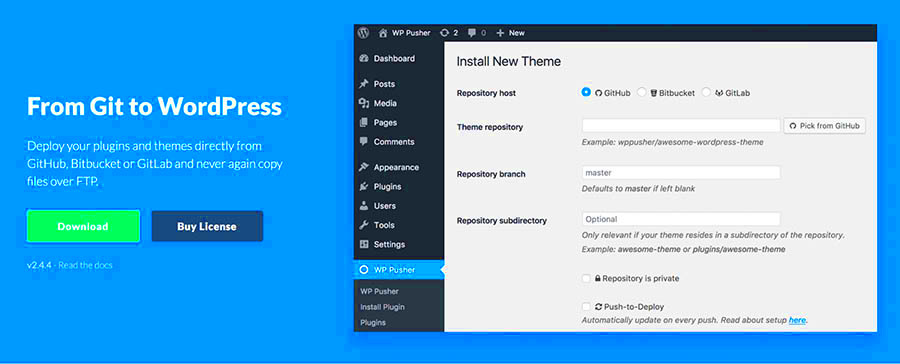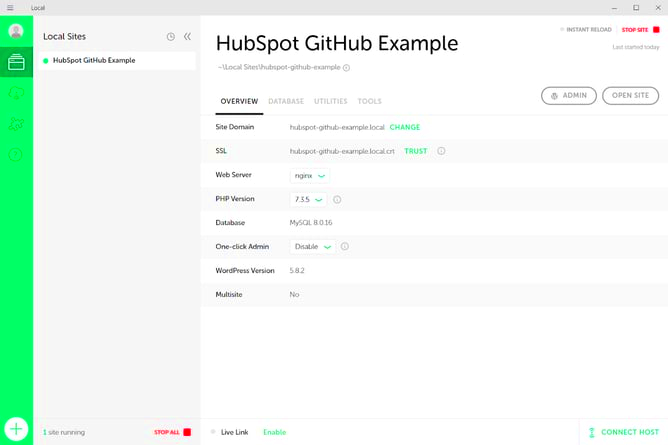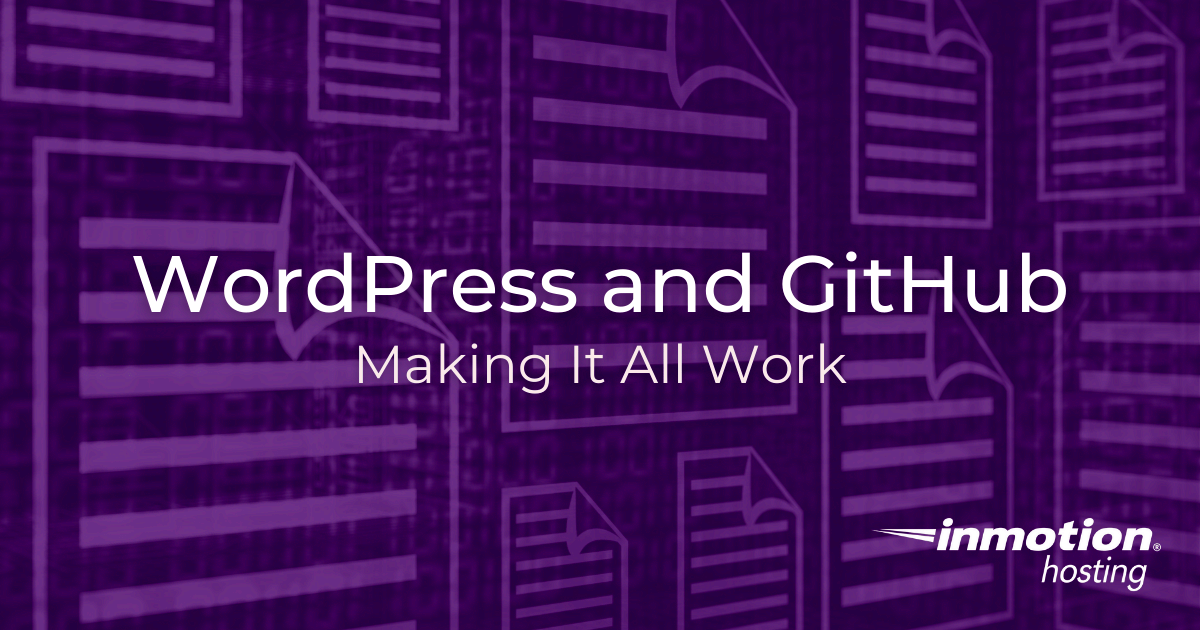When diving into the world of WordPress, many developers and site owners may ponder the benefits of integrating GitHub into their workflow. GitHub has revolutionized how we handle code, making collaboration, version control, and deployment remarkably efficient. But is it feasible for live WordPress websites? In this post, we’ll explore the concept of GitHub integration, its advantages, and considerations to determine if it’s the right fit for your
Understanding GitHub Integration

GitHub integration refers to the process of linking your WordPress site with a GitHub repository, allowing for enhanced code management and deployment. It’s more than just version control—it’s about streamlining your development process. Here’s what you need to know:
- Version Control: GitHub offers a reliable way to track changes in your code, revert to previous states, and collaborate with others easily.
- Collaboration: If you’re working in a team, GitHub allows multiple developers to work on the same project without stepping on each other’s toes. You can merge changes, resolve conflicts, and see who made what change.
- Deployment Automation: With the right setup, you can automatically deploy updates from your GitHub repository to your live WordPress site. Tools like GitHub Actions or other continuous deployment platforms can help reduce manual efforts.
- Branching: You can experiment with new features in a separate branch, keeping your live site unaffected until you’re ready to merge those changes back into the main branch.
However, while the integration sounds promising, there are specific challenges to consider:
| Challenges | Considerations |
|---|---|
| Complex Setup | Integrating GitHub may require technical know-how, especially for deployment automation. |
| Hosting Compatibility | Not all hosting providers offer seamless GitHub integration support. |
| Security Risks | Ensure sensitive information isn’t pushed to public repositories. |
With all this in mind, it’s clear that GitHub integration can be a powerful tool for managing WordPress sites, but it requires careful consideration and proper setup.
Benefits of Integrating GitHub with WordPress

Integrating GitHub with your WordPress website can unlock a treasure trove of benefits that streamline development processes and enhance the overall efficiency of your workflow. Here’s a closer look at what you can gain:
- Version Control: One of the most significant advantages of using GitHub is version control. Every change you make is tracked. If something goes wrong, you can easily revert to a previous version.
- Collaboration: GitHub allows multiple developers to work on the same project without stepping on each other’s toes. Through branches and pull requests, collaboration becomes smoother and more organized.
- Code Backup: GitHub stores your code in the cloud, providing a reliable backup. If your local files get corrupted or lost, you always have access to your latest code.
- Open Source Resources: GitHub is home to a vast number of open-source projects. You can easily leverage libraries and frameworks created by others in the community and incorporate them into your WordPress site.
- Deployment Made Easy: With CI/CD (Continuous Integration/Continuous Deployment) tools integrated with GitHub, you can set up automatic deployment processes, meaning that your latest changes can be reflected on your live site with minimal manual intervention.
In summary, integrating GitHub with WordPress not only enhances development efficiency but also fosters a collaborative environment. This integration can ultimately lead to better code quality and user experience.
Challenges of Live Integration
While integrating GitHub with your WordPress website holds many advantages, there are also some challenges you should be aware of. Here are the most notable hurdles you might face:
- Potential Downtime: When making changes via GitHub, especially during deployment, you risk introducing downtime. If not carefully managed, users might encounter broken features or inaccessible pages.
- Learning Curve: For developers unfamiliar with GitHub, the initial learning curve can be steep. Understanding how to use branches, merge code, and resolve conflicts requires time and practice.
- Version Conflicts: If multiple team members are pushing updates simultaneously, version conflicts can arise. Resolving these conflicts can be time-consuming and may lead to mistakes if not handled carefully.
- Security Risks: Keeping your GitHub repositories private is crucial. If sensitive information or access tokens slip into version control, it can lead to security vulnerabilities.
- Dependencies Management: In complex WordPress setups, managing dependencies (like plugins and themes) can become cumbersome. Changes in one part of the code can affect the functionality in another, making it essential to test thoroughly.
Overall, the challenges of live integration necessitate a thoughtful approach and potentially more robust testing processes to ensure that your site remains functional and secure. While these hurdles might seem daunting, many organizations have navigated them successfully with the right strategies in place.
Common Methods for GitHub Integration
Integrating GitHub with your WordPress website can streamline your development process, enabling better version control, collaboration, and deployment of code changes. Here are some of the most common methods you can consider:
- Manual Deployment: This involves downloading code from your GitHub repository and manually transferring it to your WordPress server through FTP. While it’s straightforward, this method can be time-consuming and prone to human error.
- Using a Plugin: Several plugins, such as WP Pusher and VersionPress, enable GitHub integration directly within WordPress. These plugins can automate deployment processes and handle version control efficiently, allowing you to push updates with just a few clicks.
- Continuous Integration/Continuous Deployment (CI/CD): Advanced users can set up CI/CD pipelines using services like GitHub Actions, CircleCI, or Travis CI. This method automates the process of deploying code changes from GitHub to the live website, ensuring that the latest changes are always up to date.
- Webhooks: By setting up webhooks, you can trigger actions on your WordPress site each time you push to your GitHub repository. For example, a webhook can automatically deploy code or notify you of recent changes.
- Using Command Line Tools: For those comfortable with the command line, tools like WP-CLI can facilitate deployments and updates directly from GitHub, allowing for a more developer-centric approach to managing your WordPress site.
Each of these methods has its pros and cons, so it’s essential to choose one that aligns with your team’s workflow and technical skill level.
Best Practices for Managing Code Changes
Managing code changes on a live WordPress website requires a thoughtful approach to maintain stability while ensuring that new features and fixes are deployed seamlessly. Here are some best practices to follow:
- Use Version Control: Always work within a version control system like Git. This allows you to track changes, roll back if necessary, and manage branches for different features or bug fixes.
- Feature Branching: Implement a branching strategy where new features are developed in separate branches rather than directly on the main branch. This keeps the main codebase stable while allowing for concurrent development.
- Regular Commits: Make small, frequent commits to your GitHub repository instead of large, infrequent ones. This approach helps in maintaining a clear history of changes and makes it easier to pinpoint issues when they arise.
- Peer Reviews: Encourage code reviews among team members through pull requests. This practice not only improves code quality but also fosters knowledge sharing within the team.
- Testing Before Deployment: Ensure that all changes are thoroughly tested in a staging environment that mirrors the live site. This reduces the risk of introducing bugs or issues when deploying to production.
- Automate Deployments: Use GitHub Actions or other CI/CD tools to automate your deployment workflows. Automation can minimize the risk of human error and speed up the deployment process.
By adhering to these best practices, you’ll not only achieve smoother code management but also contribute to the overall health and performance of your live WordPress website.
7. Alternative Solutions for Version Control in WordPress
When it comes to managing version control in WordPress, GitHub is certainly a popular choice, but it’s not the only option out there. Let’s explore some alternative solutions that can also help you streamline your workflow and maintain your site effectively.
- Git: While GitHub is integrated with Git, using Git on its own can also be effective. This allows you to keep a local repository and push changes whenever you want. It’s particularly useful for developers who prefer to work in a controlled environment before deploying changes live.
- Bitbucket: Similar to GitHub, Bitbucket offers a platform for hosting Git repositories. One unique feature of Bitbucket is that it allows for private repositories for free, making it an excellent choice for individuals or small teams looking for less visibility.
- Subversion (SVN): SVN is another version control system that can be used with WordPress. While it’s somewhat older than Git, there are still many developers who prefer it for its centralized version control, which makes it easier to manage a single version of your codebase.
- Puppet or Ansible: For those who wish to incorporate deployment automation into their version control, tools like Puppet or Ansible are highly beneficial. They allow you to manage and synchronize server configurations and deployments easily.
- Local Development Environments: Tools like Local by Flywheel, MAMP, or XAMPP let developers work on their sites locally. This way, you can track and version your changes without risking the stability of a live site.
Each of these solutions provides various benefits, such as ease of use, automation, and flexibility. Depending on your technical comfort level and project needs, an alternative version control method might be the perfect fit for your WordPress website.
8. Conclusion: Is It Worth It?
So, is GitHub integration feasible for live WordPress websites, and more importantly, is it worth the effort? The answer isn’t black and white—it really depends on your specific needs and the scale of your project.
Here are some points to consider:
- Development Team Size: If you’re part of a larger team, GitHub can significantly enhance collaboration, allowing everyone to track changes and resolve conflicts more efficiently.
- Site Complexity: For complex sites with frequent updates, version control can save you a lot of headaches in reverting changes and tracking updates efficiently.
- Technical Proficiency: If you or your team are comfortable with Git and version control workflows, the benefits are incredibly valuable. However, if you’re less experienced, the learning curve could be daunting.
- Time Investment: Integrating GitHub requires an initial time investment to set up and train. But, once established, it can save time in the long run.
- Cost-Effectiveness: Using GitHub or similar platforms can often be free or low-cost. The return on investment can be substantial when considering time saved and increased site stability.
In summary, while GitHub integration for live WordPress sites presents its challenges, the benefits can outweigh them, especially for teams that prioritize collaboration and version control. But don’t forget—alternative solutions exist that might align better with your workflow and comfort level. Ultimately, choosing the right option will depend on your unique project needs and personal preferences.



